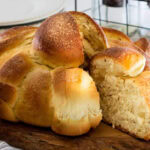
Pan de Muerto-"bread of the dead"-is Mexico's way of baking memories into dough. Soft, lightly sweet, with a whisper of orange and anise, it's decorated with bone-shaped pieces and served every November 1-2 for Día de los Muertos. Families place it on the ofrenda (home altar) to honor loved ones who've passed, then share it with coffee and family stories.
This recipe shows you how to make it from scratch, so you get the traditional flavor and the joy of pulling a golden loaf from your own oven.
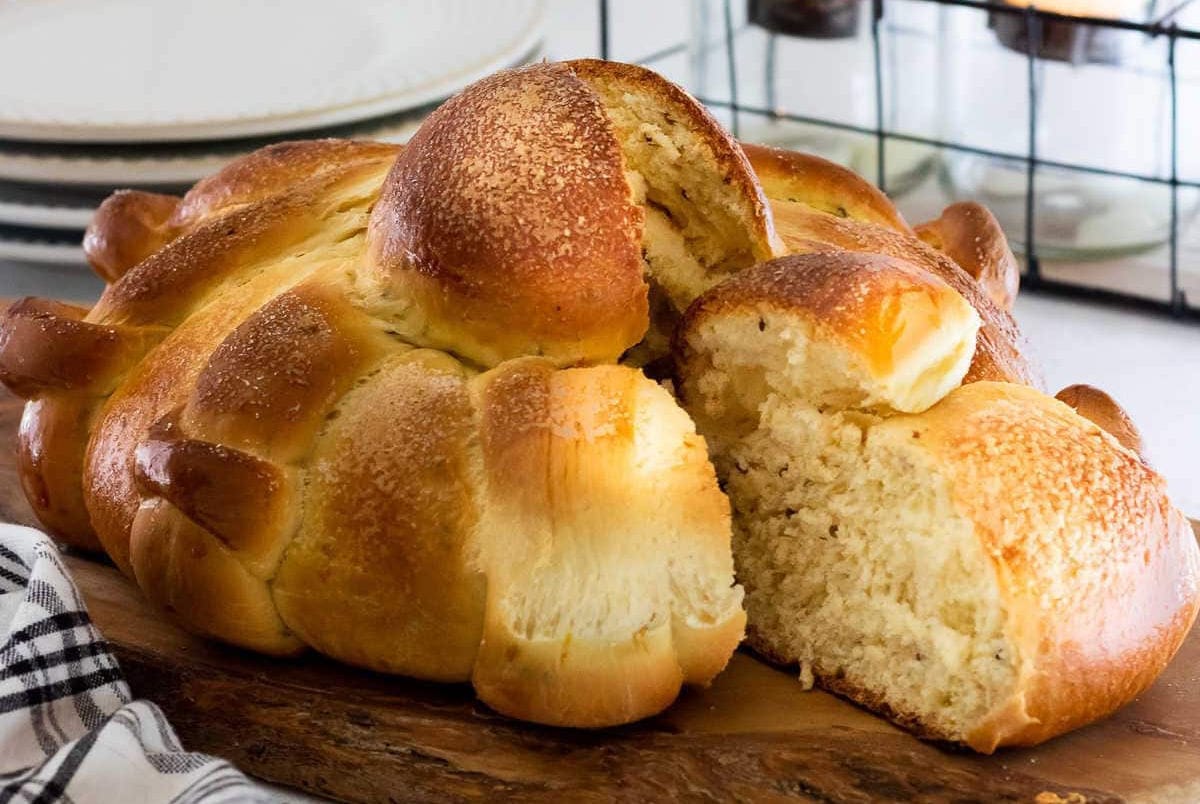
Table of Contents
- 🎥 How to make Pan de Muerto (Day of the Dead bread) (step by step video)
- 🗝️ Pan de Muerto: more than just carbs and yum
- 🧾 Ingredients for Day of the Dead bread
- 📖 Recipe
- 🔪 How to make pan de muerto step by step
- 📖 Tradition with a twist
- 👩🍳 Reader questions (a.k.a. things you'll probably Google at midnight)
- 📚 More recipes to bake (because one loaf is never enough)
- Day of the Dead Bread
- 💬 Comments
🎥 How to make Pan de Muerto (Day of the Dead bread) (step by step video)
Because sometimes reading directions feels like homework, here's a video that shows you exactly how Pan de Muerto comes together-mixing, shaping the "bones," and baking it into that golden, sugar-dusted loaf. If you've never made Day of the Dead bread before, this will save you from second-guessing and from ending up with something that looks more like a sad dinner roll than a cultural tradition.
🗝️ Pan de Muerto: more than just carbs and yum
- It's not just bread-it's tradition. Pan de Muerto is baked for Día de los Muertos (November 1-2) and placed on the ofrenda to honor loved ones who've passed. The round loaf represents the circle of life, the knob on top symbolizes the skull, and the "bones" draped across stand for the departed.
- The flavor is unmistakable. Lightly sweet with orange zest and anise, it's a flavor combination that says "festive" in every bite. Don't like anise? Leave it out and it's still a showstopper.
- It's meant to be shared. Families gather to eat it with coffee, hot chocolate, or atole while telling stories. Translation: this bread comes with built-in permission to eat it warm, in big pieces, surrounded by people you love.
🧾 Ingredients for Day of the Dead bread
These are the basics you'll need to bake Pan de Muerto at home-nothing wild or impossible to track down. Flour, yeast, eggs, butter, orange zest, and a little anise come together to make a loaf that's soft, fragrant, and worthy of any ofrenda. Check your pantry before you start so you're not halfway through the dough when you realize you're out of sugar.
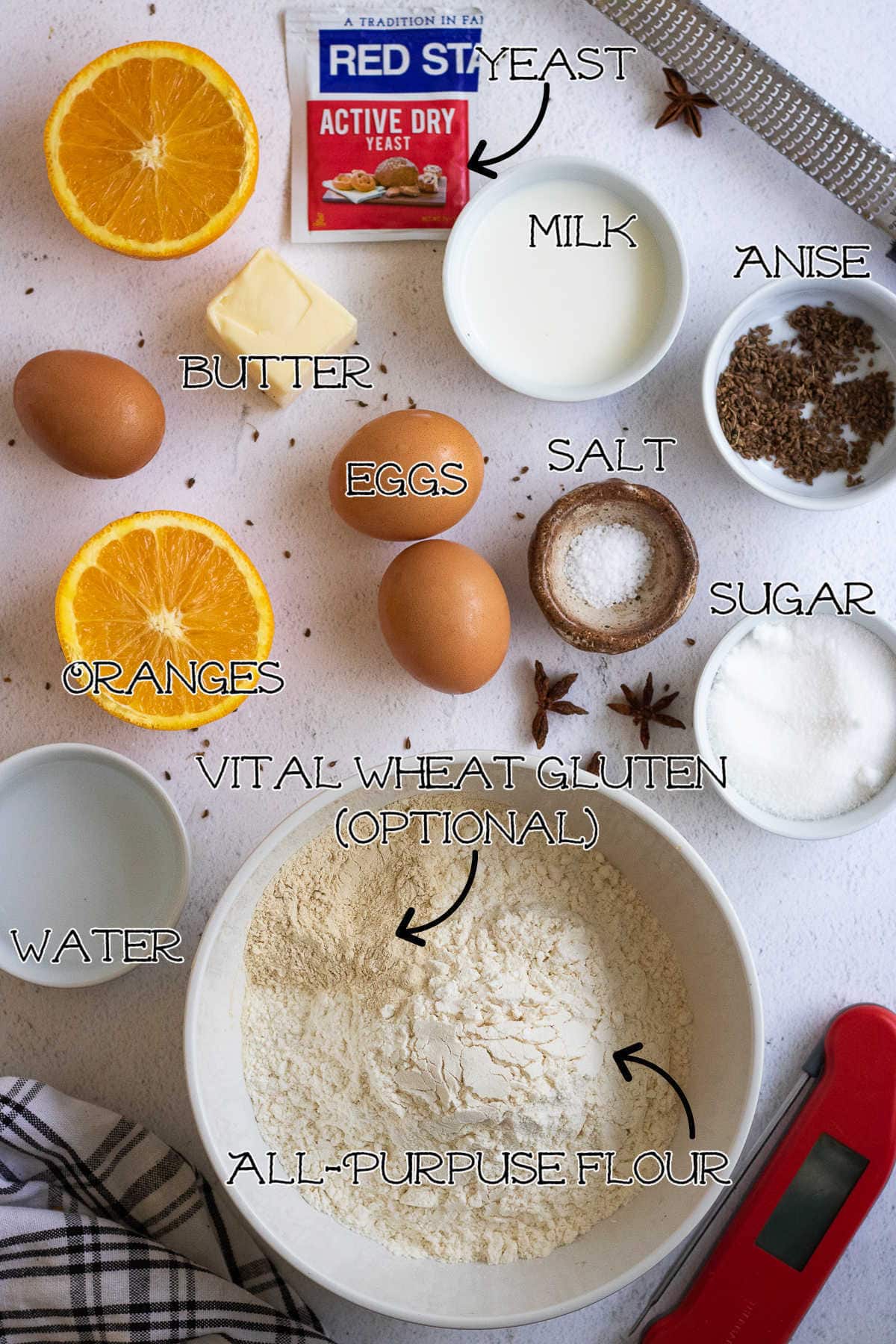
- Active dry yeast - the magic that makes the dough rise.
- Warm milk - adds richness and tenderness.
- Anise seed - traditional flavor; swap for ground anise or skip if you're not a fan.
- Butter - for that soft crumb and buttery taste.
- Eggs - give structure and a little extra richness.
- Salt - balances the sweetness and flavors.
- Sugar - lightly sweetens the bread and feeds the yeast.
- All-purpose flour - the backbone of the dough.
- Vital wheat gluten (optional) - makes the crumb extra light and fluffy.
✨ Free Kitchen Cheat Sheet: Pan de Muerto Made Easy
Want all the tips, FAQs, and storage hacks in one place? This printable fact sheet covers everything you need to know about baking Pan de Muerto-FAQs, notes, variations, and ways to keep it fresh. Think of it as your Día de los Muertos bread survival guide…without the flour all over your counter. Download this free Day of the Dead Bread kitchen cheat sheet.
📖 Recipe
Pan de Muerto (Mexican Day of the Dead bread)
Print Pin Recipe Rate RecipeIngredients
- ¼ cup water, 110F
- ¼ cup sugar, divided use
- 1 package active dry yeast
- ¼ cup milk
- ¼ cup butter
- 3 eggs
- 3 ½ cups all purpose flour
- 2 tablespoons vital wheat gluten, optional
- 2 tablespoons anise seed
- 2 teaspoons orange zest, about 1 orange
- ½ teaspoon kosher salt, if using table salt use just ¼ teaspoon
Glaze
- ¼ cup orange juice
- ¼ cup sugar
- 2 tablespoons sugar, for garnish
Instructions
- Add 1 tablespoon of sugar and the yeast to the 110F water. Stir and set aside.
- Heat the milk until it simmers then remove from the heat and add the butter. Set aside to cool to 110F.
- Combine one cup of the flour, wheat gluten (if using), orange zest, anise seed, and salt in the bowl of your mixer and blend.
- Add the eggs to the 110F milk mixture, beating with a fork until blended.
- Pour the yeast and the milk mixture into the flour mixture.
- With the paddle attachment of your mixer blend on low.
- Add the remaining flour a little at a time until the dough is soft but not overly sticky. You may not need all the flour or you may need a little more.
- Use the dough hook on the mixer and knead for about 5 minutes, or until the dough is smooth and stretchy. It will feel a bit like your earlobe when you press it between two fingers.
- Place in a bowl that has been buttered and brush butter over the top. Cover and let rise until double - about 1 hour.
- Punch down and pull off about ⅓ of the dough. Set it aside.
- Shape the remaining dough into a round. Now take a walnut sized ball of the dough you set aside and make a knob on top of the round. Roll the remaining dough into 4 to 8 roped shaped like bones. Place vertically around the round loaf, from the knob on top to the bottom.
- Place on a silpat or parchment covered baking sheet. Let the loaf rise for about 1 hour.
- While the bread is rising make the glaze by boiling the sugar and orange juice together for about 3 minutes. Set it aside.
- Bake at 350F for 30 to 45 minutes, or until it sounds hollow when tapped on the bottom.
- Remove the loaf from the oven and brush with the glaze. Sprinkle with sugar.
Notes
- If you'd like to omit the orange glaze you can brush the bread before baking with an egg yolk mixed with 1 teaspoon of water. It gives the crust a nice glossy look.
- You can make the dough for Day of the Dead bread the day before and refrigerate overnight
Nutrition Facts
Nutrition information is estimated as a courtesy. If using for medical purposes, please verify information using your own nutritional calculator. Percent Daily Values are based on a 2000 calorie diet.
This recipe has been tested several times. If you choose to use other ingredients, or change the technique in some way, the results may not be the same.
🔪 How to make pan de muerto step by step
Follow these step-by-step directions to make Pan de Muerto from scratch. Don't worry-if you can stir, knead, and roll dough into "bones," you can handle this recipe. I'll walk you through mixing, rising, shaping, and baking so your loaf comes out golden, soft, and ready for the sugar finish.
Mix the dough
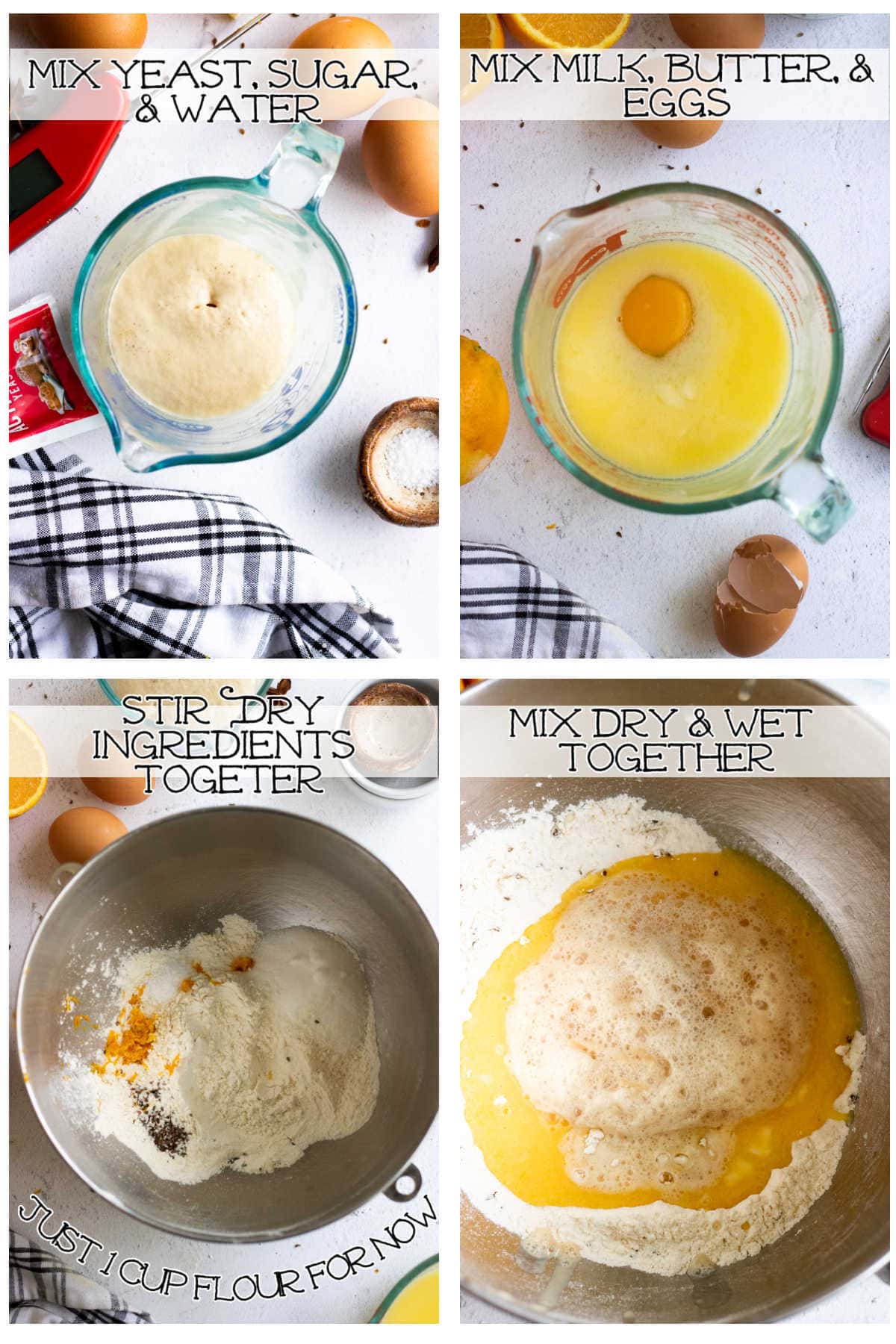
- Stir the yeast, a spoonful of sugar, and warm water together in a small bowl. Let it proof-translation: give the yeast a few minutes to wake up and get bubbly like it just heard gossip.
- In another bowl, mix your milk, melted butter, and eggs. Think of it as the "wet team."
- Toss one cup of flour, the wheat gluten (if you're using it), orange zest, anise seed, and salt into the bowl of your stand mixer. This is the "dry team."
- Heat the milk and butter until the butter melts, then let it cool down to about 110°F-warm bath, not lava pit. Now pour both the yeast mix and the milk mix into the flour bowl and let the magic begin.
Let dough rise
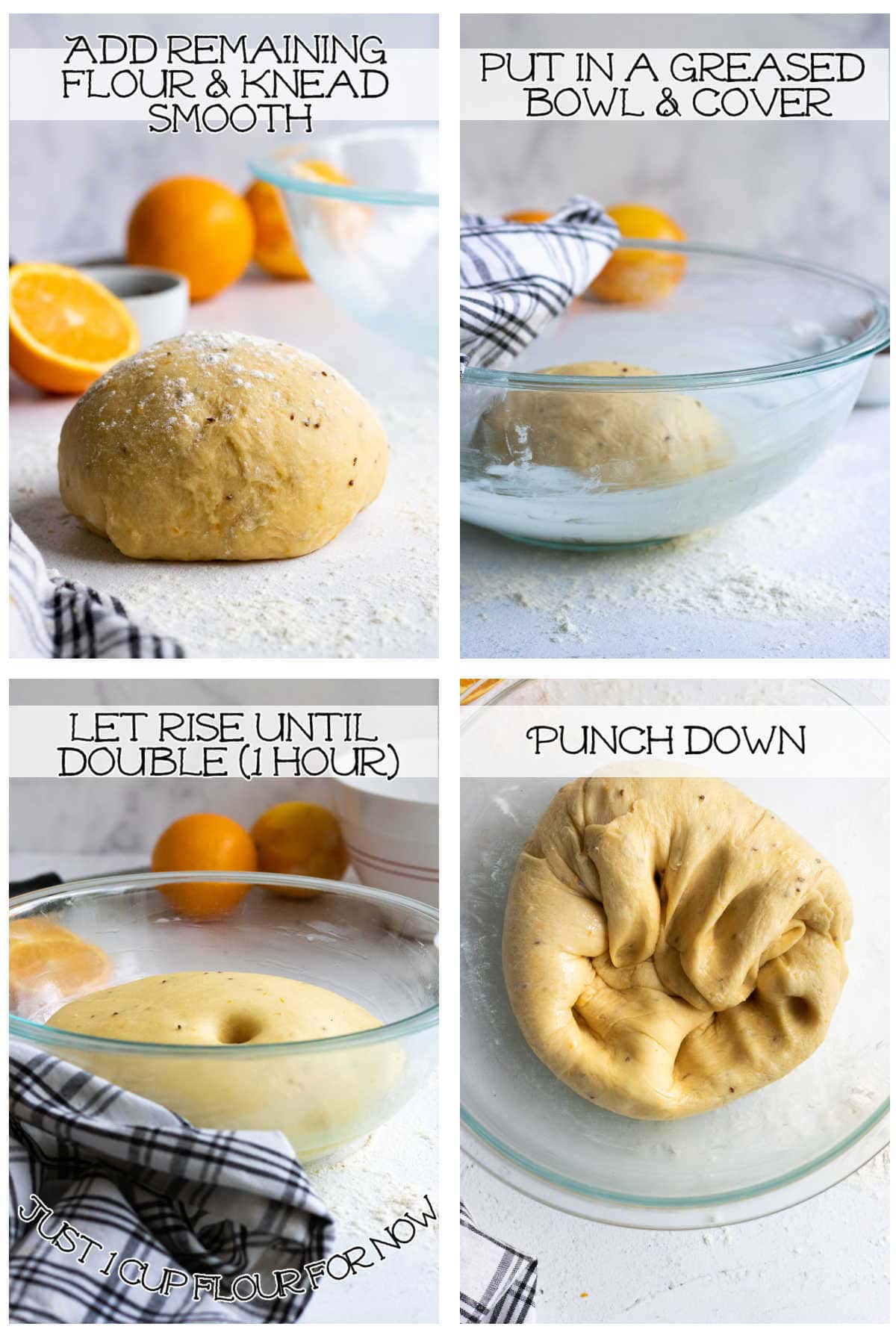
- Add the rest of the flour a little at a time until you've got a soft dough that's not sticking to everything in sight. If you're not sure, watch the video-it'll show you the "right" texture so you don't panic.
- Plop that dough into a big buttered bowl, then brush a little melted butter on top (warm, not scorching-we're feeding yeast, not frying it).
- Cover with a clean tea towel and let it hang out in a warm spot until it doubles in size-usually about an hour. Yes, it's basically nap time for your dough.
- Punch it down. Gently, but with enough satisfaction to let out some of that pent-up frustration.
How to shape Mexican Day of the Dead bread
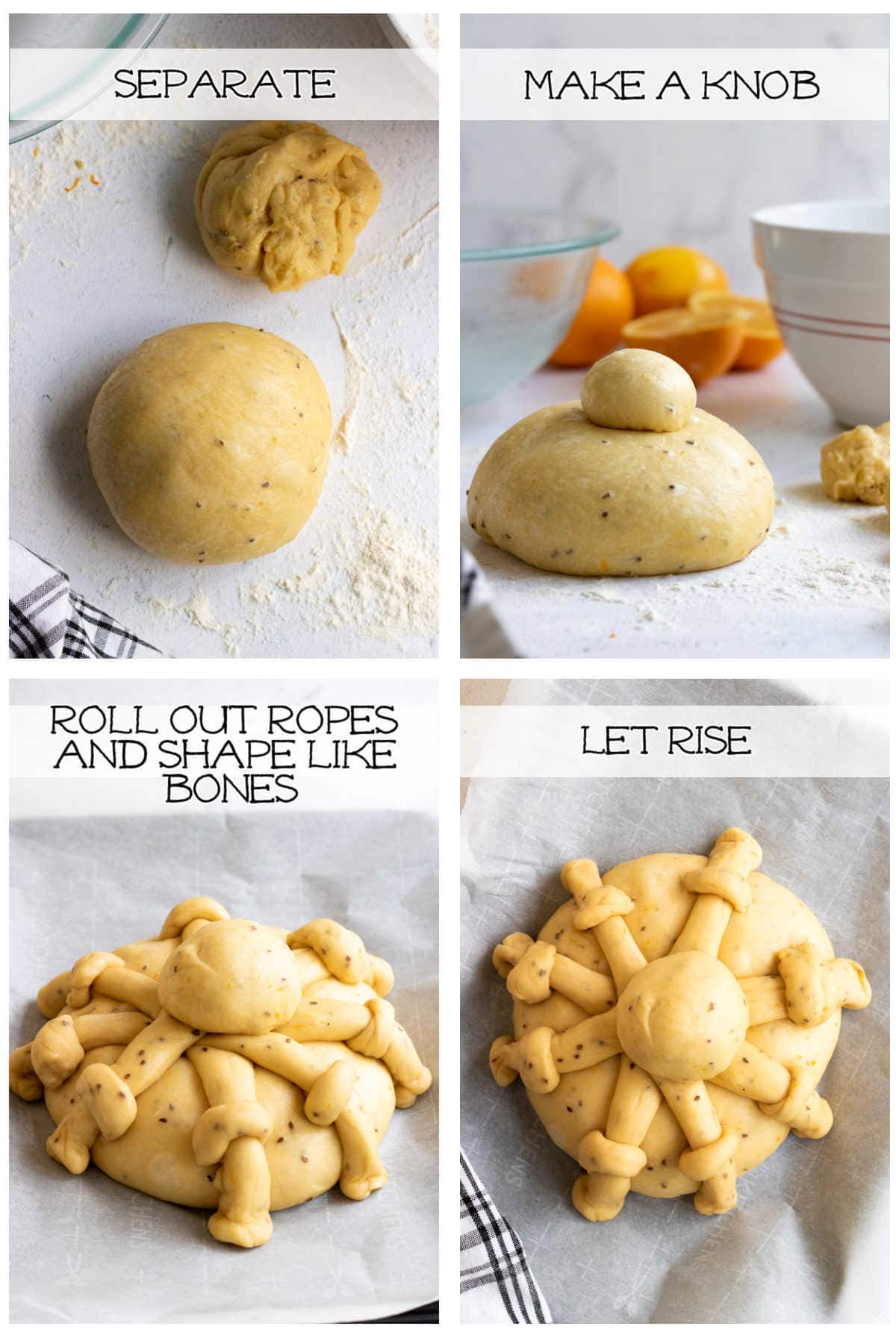
- Pull off about a third of the dough and set it aside. Roll the rest into a round loaf-slightly flat, like a bread pillow.
- From the reserved dough, roll a small ball for the "knob" on top. This is your skull.
- Take the rest of that dough and roll it into skinny ropes shaped like bones. Drape them dramatically over the loaf and tuck them under the knob. Congratulations, you just made bread anatomy.
- Set the loaf on a parchment- or silpat-lined baking sheet. Let it rise for about an hour, then bake as directed in the recipe card. Try not to hover at the oven window like it's Netflix, but no promises.
📖 Tradition with a twist
- Shapes by region: Not every loaf is round with "bones" across the top. In some areas, bakers shape Pan de Muerto into angels, hearts, or even full human figures. (Yes, it's as creepy-delightful as it sounds.)
- Glaze swap: Melted orange marmalade works beautifully instead of homemade syrup. Lazy shortcut? Maybe. Delicious? Definitely.
- Orange blossom water: A splash gives the bread a fragrant, floral lift that feels straight out of a garden.
- Regional spins: Oaxaca is known for extra-large loaves; Puebla often sprinkles sesame seeds; Michoacán loves a sugar crust tinted pink.
👩🍳 Reader questions (a.k.a. things you'll probably Google at midnight)
Got questions? You're not the only one. From "Do I really have to use anise?" to "Can I freeze this loaf without angering the ancestors?"-here are the answers people ask most about Pan de Muerto. Short, sweet, and straight from my kitchen to yours. Have other questions? Ask me in the comments or download the free kitchen cheat sheet above.
It's a type of Mexican pan dulce (sweet bread) that's traditionally baked for Día de Muertos, celebrated from November 1st to November 2nd.
The round loaf represents the cycle of life, the knob on top is the skull, and the strips of dough across the top are "bones." Basically, it's carbs with a side of symbolism.
Brush with the orange glaze, and/or sprinkle with sugar, powdered sugar, or brightly colored sugar.
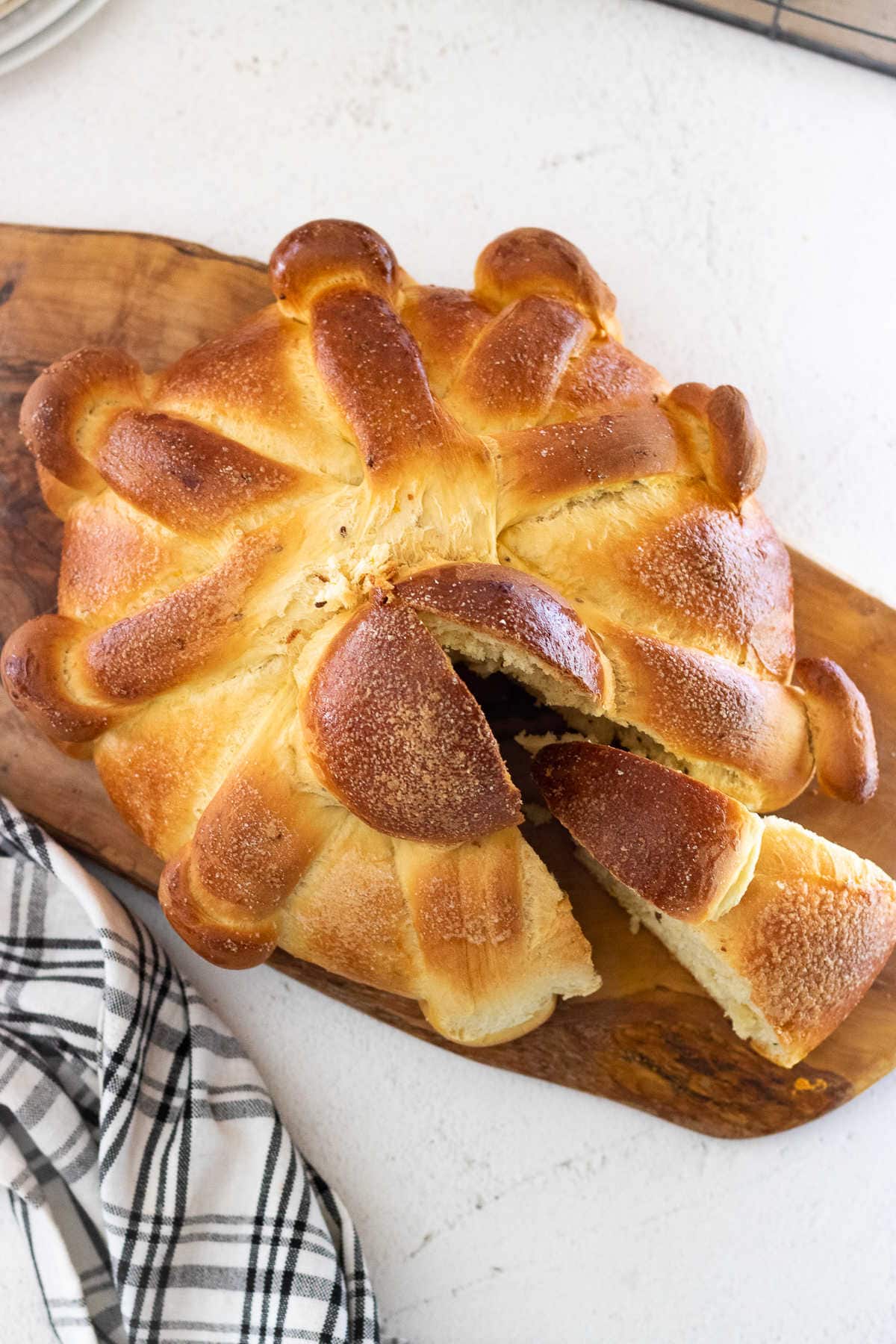
📚 More recipes to bake (because one loaf is never enough)
If you're in the mood for more homemade bread and Southern comfort, I've got you covered. These recipes are just as cozy, carb-filled, and perfect for sharing-whether it's family dinner, holiday brunch, or a Tuesday when you need carbs to survive.
Pan de Muerto isn't just bread-it's memory, comfort, and a sugar-dusted way of saying, "We still love and miss you." Whether you stick with tradition or throw in your own twist, this loaf deserves a spot in your fall baking lineup.
Bake it for Día de los Muertos, bake it for brunch, bake it because carbs are cheaper than therapy. Just promise me one thing-tear into it while it's still warm, surrounded by people who'll tell the stories worth remembering.
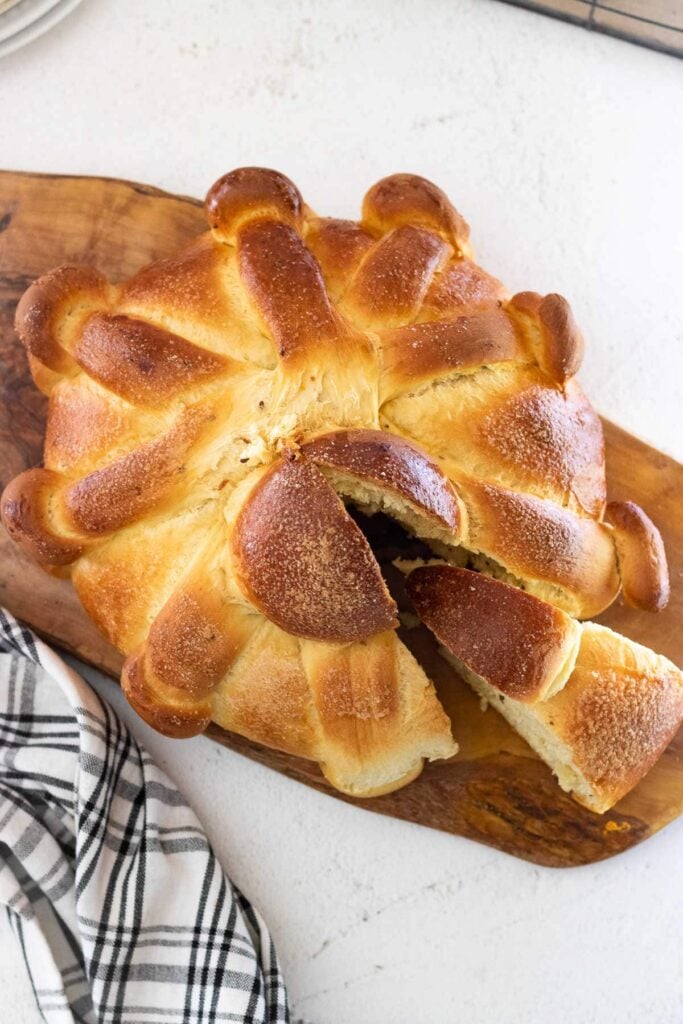
Don't lose this recipe!
Day of the Dead Bread
Pin to your favorite Pinterest board to keep it handy.

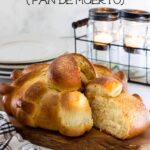
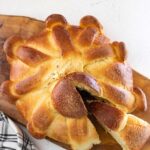

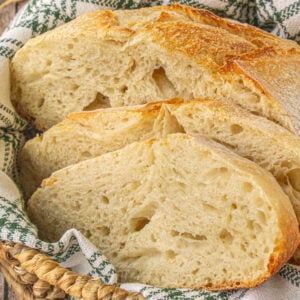
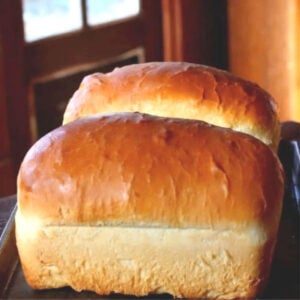
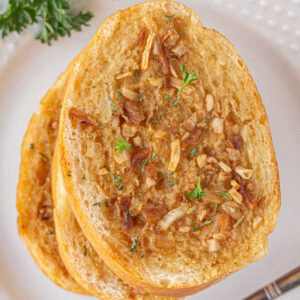
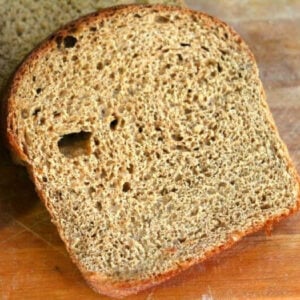
Twila says
I'm making this today, but I like to make the dough, in the bread machine, makes my like much easier!! It makes the house smell wonderful!! I just used a teaspoon of the anise, because it tends to be too strong for me! I'm sure it's gonna be great!!
Marye says
Let me know!